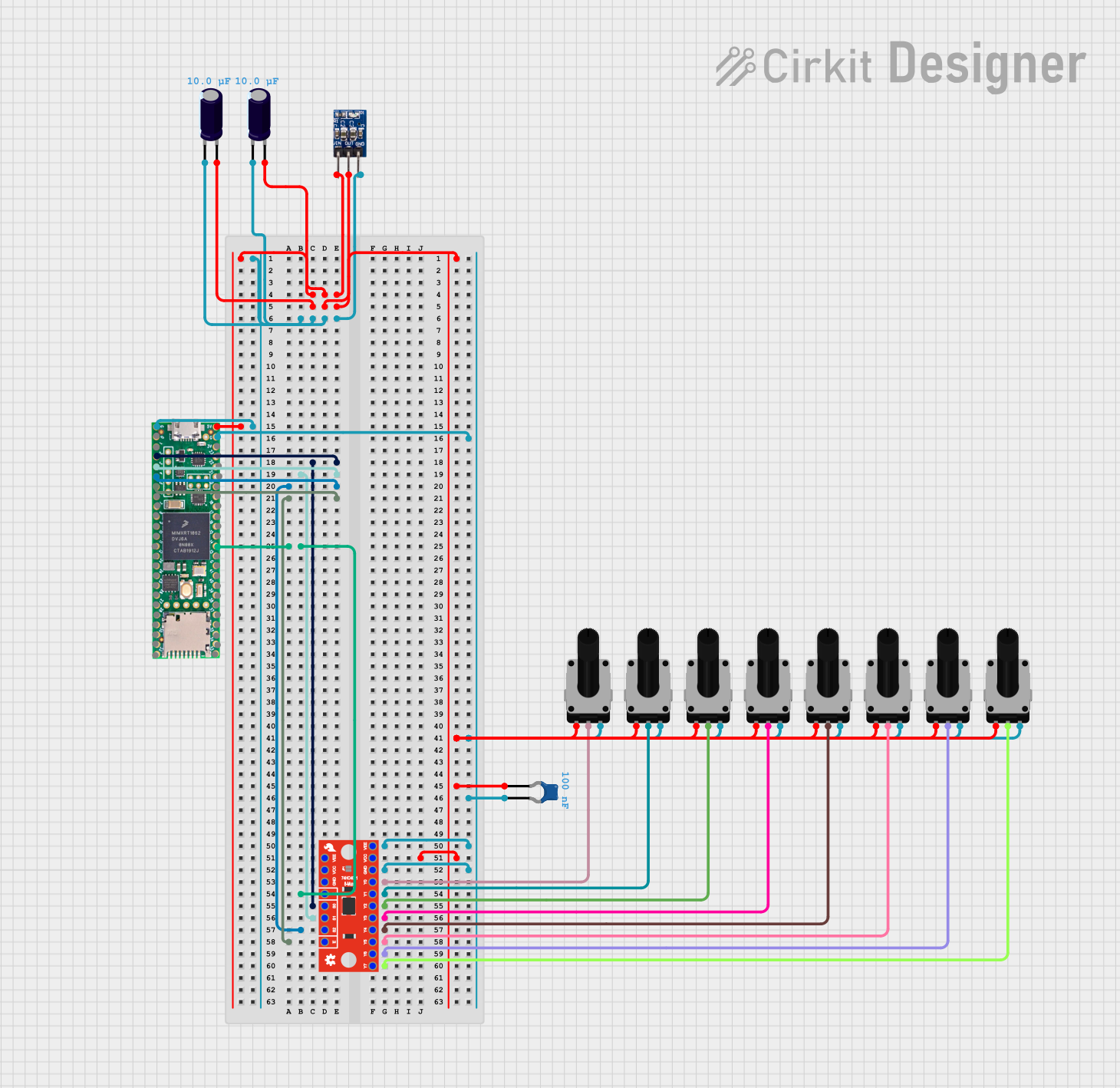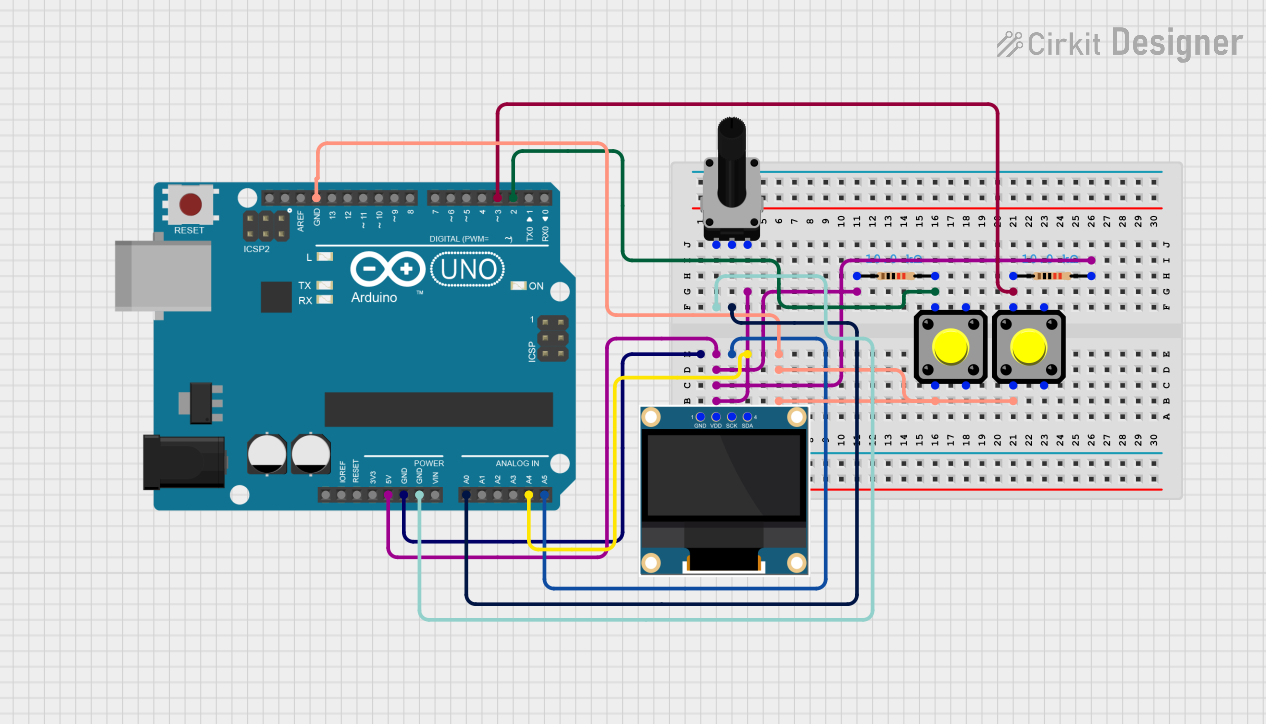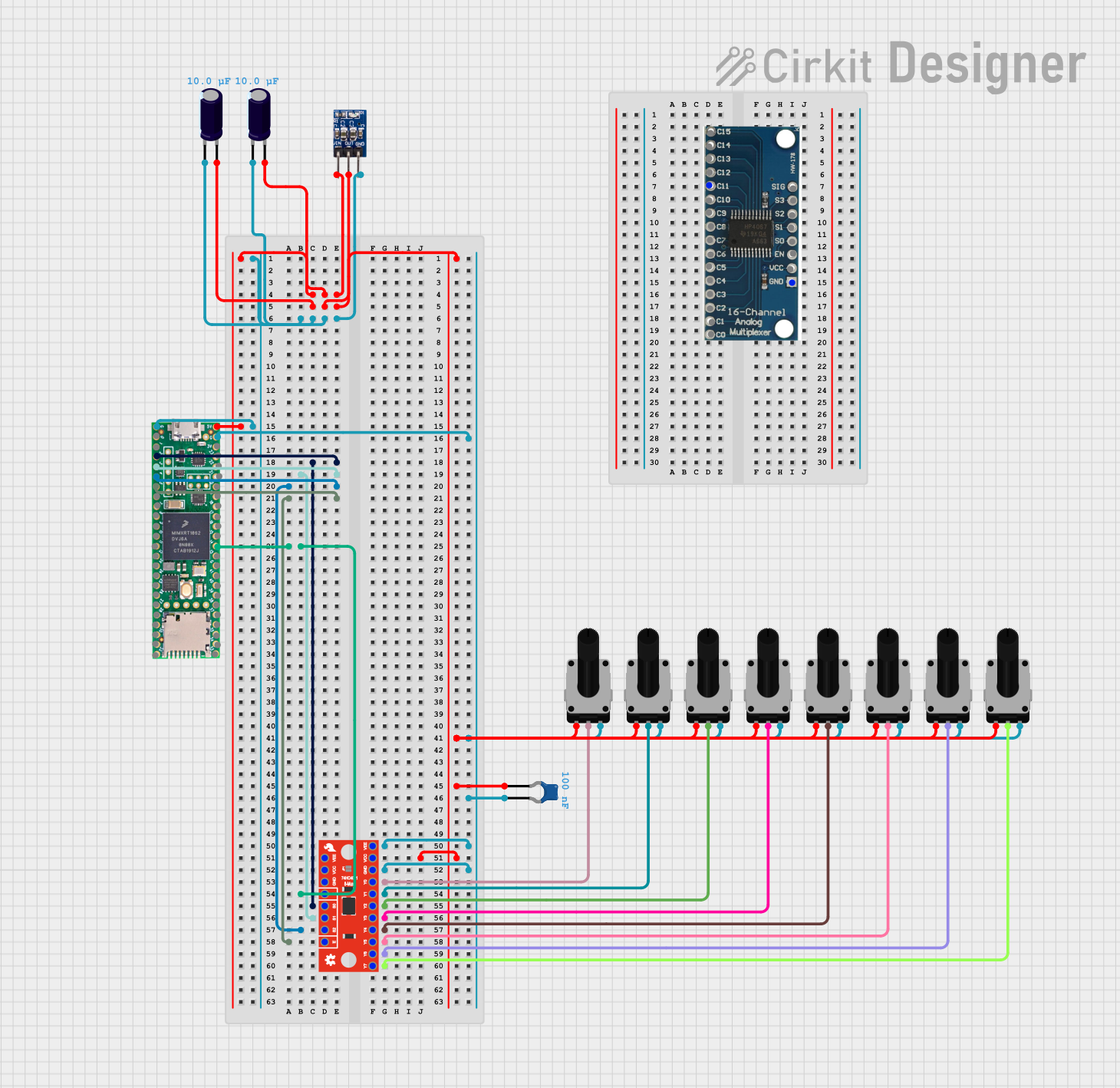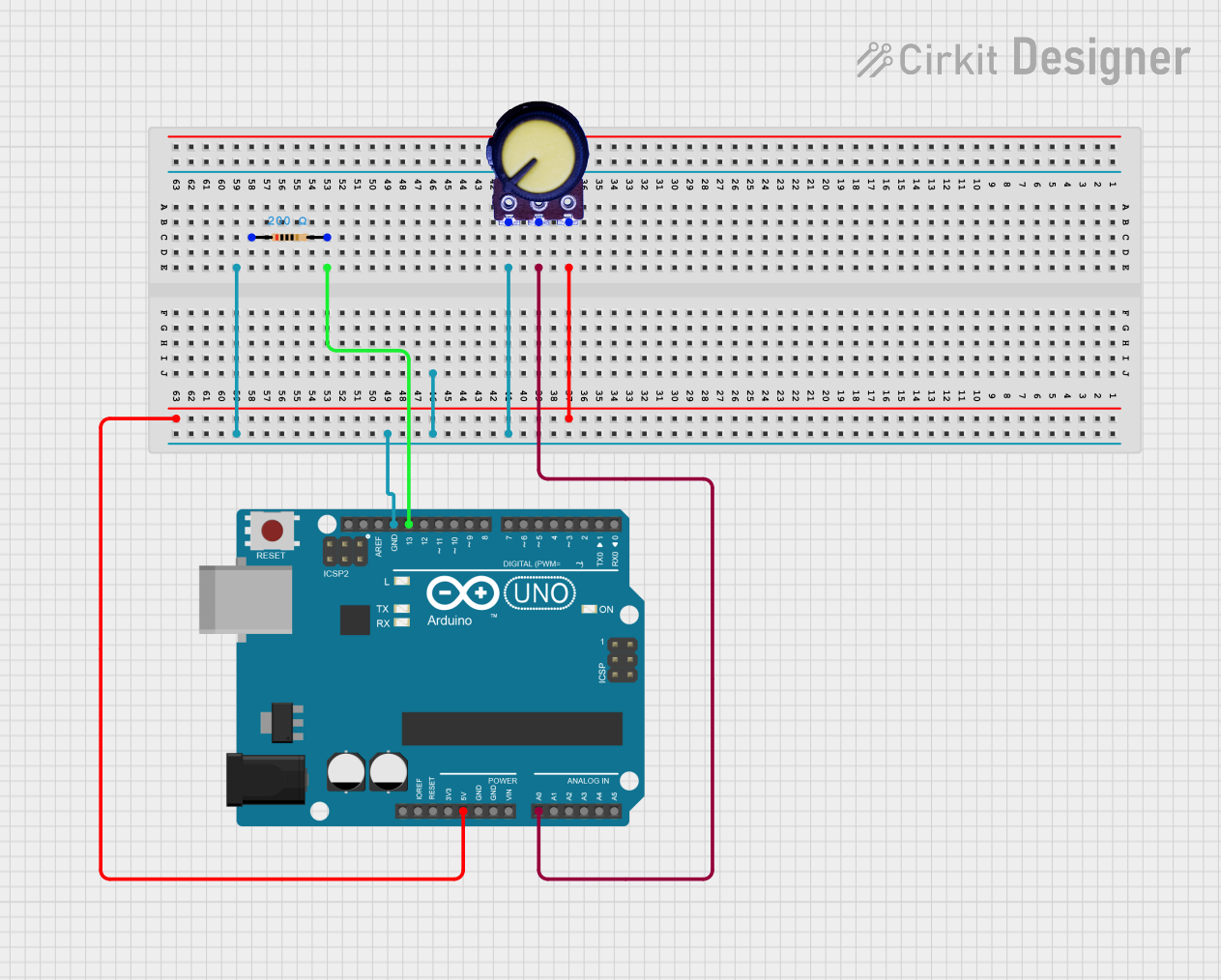
How to Use 10KOHM Potentiometer: Examples, Pinouts, and Specs

 Design with 10KOHM Potentiometer in Cirkit Designer
Design with 10KOHM Potentiometer in Cirkit DesignerIntroduction
The 10KΩ potentiometer is a variable resistor that allows for precise adjustment of voltage levels in a circuit. By varying its resistance, it enables control over the flow of current, making it a versatile component in electronic designs. This potentiometer has a resistance value of 10,000 ohms and is commonly used in applications such as audio volume control, signal tuning, and brightness adjustment in LED circuits. Its simplicity and reliability make it a staple in both beginner and advanced electronics projects.
Explore Projects Built with 10KOHM Potentiometer

 Open Project in Cirkit Designer
Open Project in Cirkit Designer
 Open Project in Cirkit Designer
Open Project in Cirkit Designer
 Open Project in Cirkit Designer
Open Project in Cirkit Designer
 Open Project in Cirkit Designer
Open Project in Cirkit DesignerExplore Projects Built with 10KOHM Potentiometer

 Open Project in Cirkit Designer
Open Project in Cirkit Designer
 Open Project in Cirkit Designer
Open Project in Cirkit Designer
 Open Project in Cirkit Designer
Open Project in Cirkit Designer
 Open Project in Cirkit Designer
Open Project in Cirkit DesignerTechnical Specifications
- Resistance Value: 10KΩ (10,000 ohms)
- Type: Rotary potentiometer
- Adjustment: Manual, via a rotating knob or shaft
- Power Rating: Typically 0.25W (check specific model for exact rating)
- Tolerance: ±10% (varies by manufacturer)
- Operating Voltage: Up to 50V (varies by model)
- Temperature Range: -10°C to +70°C (varies by model)
- Lifespan: Typically 10,000 to 50,000 cycles
Pin Configuration and Descriptions
The 10KΩ potentiometer typically has three pins:
| Pin | Name | Description |
|---|---|---|
| 1 | Terminal 1 | One end of the resistive track. Connect to the voltage source or ground. |
| 2 | Wiper (Output) | The adjustable middle pin that provides the variable voltage output. |
| 3 | Terminal 2 | The other end of the resistive track. Connect to the ground or voltage source. |
Usage Instructions
How to Use the 10KΩ Potentiometer in a Circuit
Basic Connection:
- Connect Pin 1 to the positive voltage source (e.g., 5V).
- Connect Pin 3 to ground (GND).
- Use Pin 2 (the wiper) to obtain a variable voltage output between 0V and the input voltage.
Adjusting Resistance:
- Rotate the potentiometer's knob or shaft to change the resistance between the wiper (Pin 2) and the two terminals (Pin 1 and Pin 3). This adjusts the output voltage.
Example Application:
- Use the potentiometer to control the brightness of an LED by connecting the wiper to the LED's input and adjusting the resistance to vary the current.
Important Considerations and Best Practices
- Power Rating: Ensure the potentiometer's power rating is not exceeded to avoid overheating or damage.
- Mechanical Stress: Avoid applying excessive force to the shaft or knob to prevent mechanical failure.
- Debouncing: In applications requiring precise readings, consider software or hardware debouncing to handle noise caused by mechanical movement.
- Mounting: Secure the potentiometer properly to prevent movement during operation.
Example: Using a 10KΩ Potentiometer with Arduino UNO
The following example demonstrates how to use a 10KΩ potentiometer to control the brightness of an LED using an Arduino UNO.
Circuit Connections:
- Connect Pin 1 of the potentiometer to the 5V pin on the Arduino.
- Connect Pin 3 of the potentiometer to the GND pin on the Arduino.
- Connect Pin 2 (wiper) to the A0 analog input pin on the Arduino.
- Connect the LED's anode to a PWM pin (e.g., pin 9) on the Arduino through a 220Ω resistor.
- Connect the LED's cathode to GND.
Arduino Code:
// Define the pins for the potentiometer and LED
const int potPin = A0; // Potentiometer wiper connected to analog pin A0
const int ledPin = 9; // LED connected to PWM pin 9
void setup() {
pinMode(ledPin, OUTPUT); // Set the LED pin as an output
}
void loop() {
int potValue = analogRead(potPin); // Read the potentiometer value (0-1023)
// Map the potentiometer value to a PWM range (0-255)
int ledBrightness = map(potValue, 0, 1023, 0, 255);
analogWrite(ledPin, ledBrightness); // Set the LED brightness
}
Troubleshooting and FAQs
Common Issues
No Output Voltage:
- Cause: Incorrect wiring of the potentiometer pins.
- Solution: Double-check the connections. Ensure Pin 1 is connected to the voltage source, Pin 3 to ground, and Pin 2 to the output.
Inconsistent or Noisy Output:
- Cause: Dust or wear on the resistive track.
- Solution: Clean the potentiometer with contact cleaner or replace it if worn out.
LED Not Responding:
- Cause: Incorrect resistor value or LED polarity.
- Solution: Verify the LED is connected correctly (anode to PWM pin, cathode to GND) and use a suitable current-limiting resistor.
FAQs
Can I use the 10KΩ potentiometer for audio applications?
- Yes, it is commonly used for volume control in audio circuits.
What happens if I reverse the connections on Pin 1 and Pin 3?
- The potentiometer will still function, but the direction of rotation for increasing/decreasing resistance will be reversed.
Can I use this potentiometer to control high-power devices?
- No, the 10KΩ potentiometer is not designed for high-power applications. Use it to control low-power signals or as part of a larger control circuit.
By following this documentation, you can effectively integrate the 10KΩ potentiometer into your projects and troubleshoot common issues with ease.